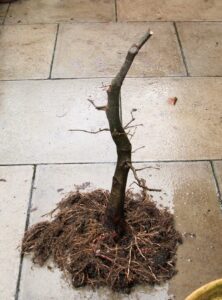The questions “how old is that bonsai” and “how long can a bonsai live” are often asked by those gaining an interest in bonsai. The answer to these specific questions are answered elsewhere at Bonsai4me (Starting Out In Bonsai) however, whilst browsing the UK National Parks website recently I ran across this data for the life-expectancy of many native tree species found growing in the wild in the UK.
This data illustrates the average or expected life-span of trees growing in the wild in the UK and therefore represents what can be seen as the natural life expectancy of each species:
Common Name |
Latin Name |
Typical Life-Span (Years) |
Common Alder |
Alnus glutinosa |
120 |
Common Ash |
Fraxinus excelsior |
200 |
European Beech |
Fagus sylvatica |
350 |
Birch |
Betula sp. |
100 |
Wild/Gean Cherry |
Prunus avium |
50 |
Common Hawthorn |
Crataegus monogyna |
300 |
Hazel |
Corylus avellana |
70 |
Holly |
Ilex aquifolium |
300 |
Hornbeam |
Carpinus betulus |
300 |
Field Maple |
Acer campestre |
120 |
European/English Oak |
Quercus robur |
800 |
Rowan/Mountain Ash |
Sorbus aucuparia |
120 |
Scots Pine |
Pinus sylvestris |
500 |
Willow |
Salix sp. |
400 |
Yew |
Taxus baccata |
5000 |
As bonsai, the exact life expectancy of each tree species should be greater. Ideal growing conditions, protection from the worst of the elements, natural trauma, insects and disease and being continual pruned (which in turn encourages juvenile branch and root growth) should theorectically ensure that a tree lives beyond its average life-span as a bonsai.




